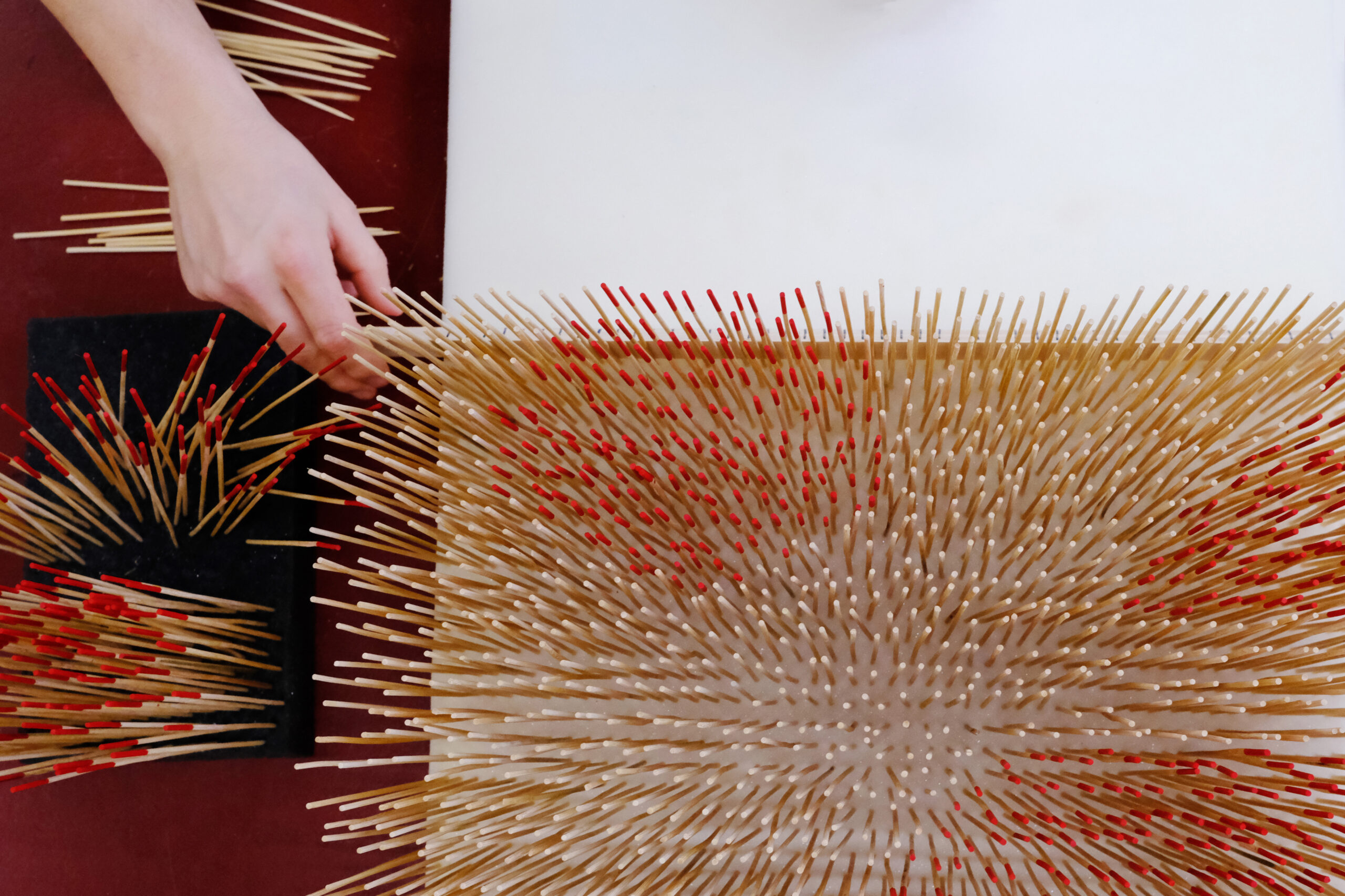Milan, April 16th, 2024
WE MAKE CARPETS IN CONVERSAZIONE CON MUSE MAGAZINE
In occasion of the Design Week 2024, Issey Miyake presents from the 16th to the 29th of April at Via Bagutta 12 a new series of special installations realized by the Dutch collective We Make Carpets, which has spent the last decade transforming everyday objects and materials into site-specific installations guided by a simple belief: mass-produced objects and materials lose their exceptional beauty due to their quantity, availability, and the carelessness with which they are used and discarded. Even if we closely observe something, like a simple cleaning sponge, a fork, or a clothespin, it’s difficult to discern their quality, technical ingenuity, and colors. We wash dishes, eat, and hang laundry without giving it a second thought. We Make Carpets chooses objects like these, purchases them in large quantities, and gives rise to a glorious process of reappreciation: the three artists exchange knowing glances as the initial designs begin to emerge seemingly out of thin air and, in the end, a work of art begins to materialize on the floor. A transitory and vulnerable carpet made with objects from the same family of products: forks, sponges, clothespins, and countless other disposable items.
Becoming famous for their non-walkable surfaces made with large quantities of common use objects, the trio has exhibited their works in renowned museums from Australia to the United States, constantly seeking new forms and possibilities. The project “Fold and Crease” “speaks” of quality and craftsmanship, principles that we find in the philosophy of Issey Miyake.
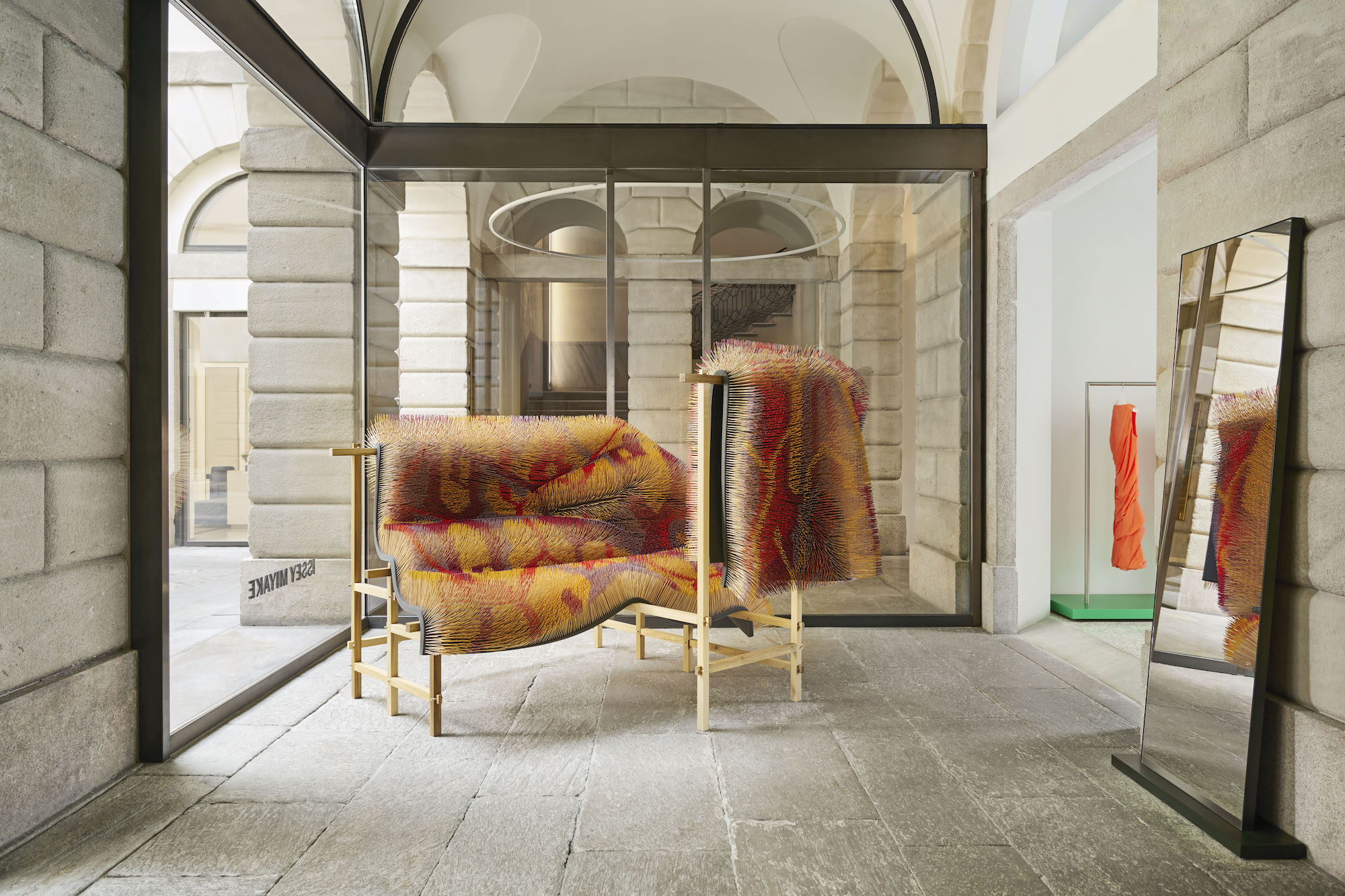
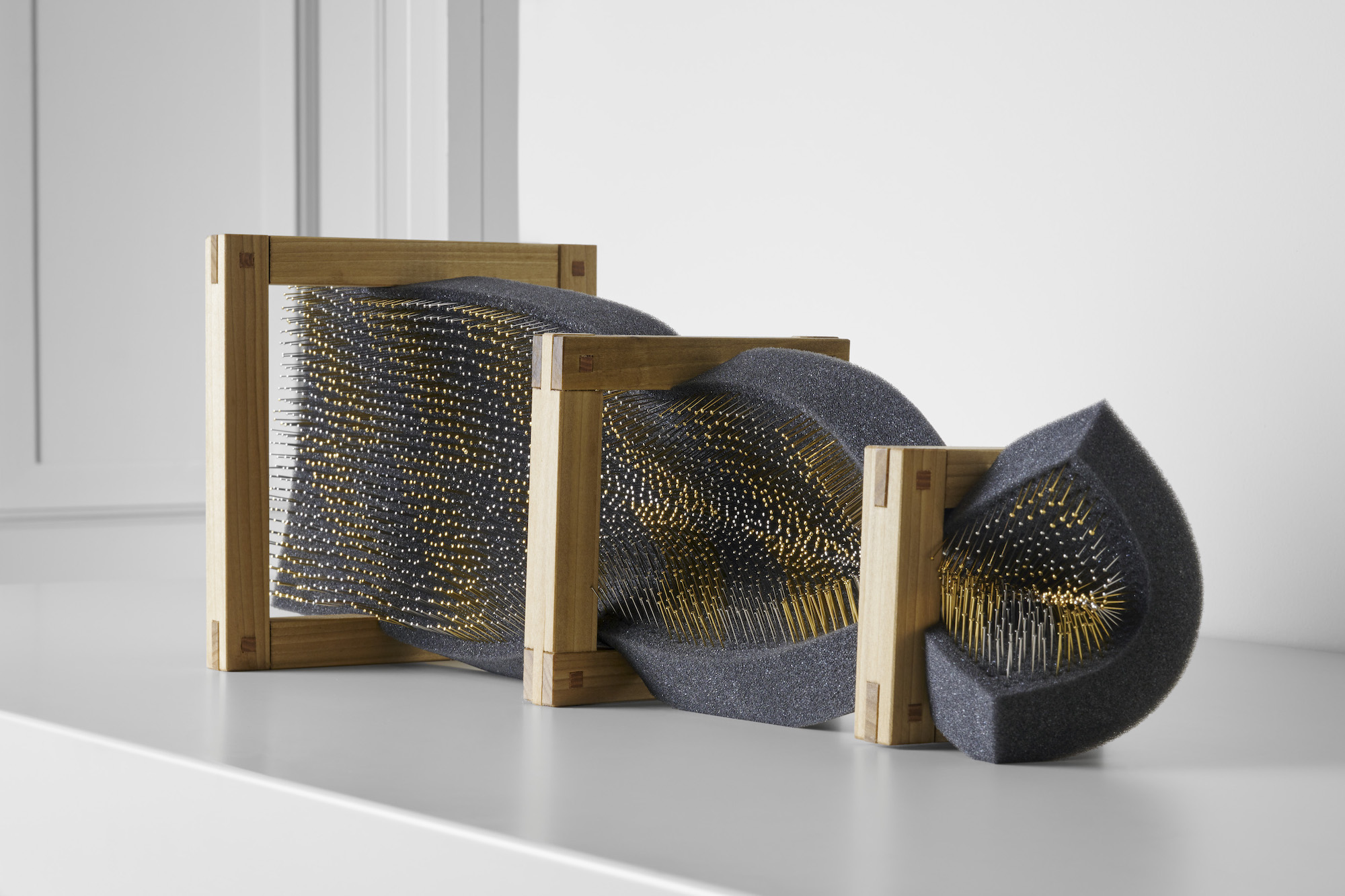
FF How and when was We Make Carpets born?
WMC We Make Carpets was born almost 15 years ago in Eindhoven the Netherlands. We started organizing exhibitions together when Bob and Marcia just graduated and Stijn was still graduating. Within the exhibitions we explored ideas we had about collective making. Within one of these exhibition our first work as We Make Carpets was made: Forest Carpet. A work made out of objects found on the forest floor.
FF How many are you, and where do you originally come from?
WMC We are with three, Bob Waardenburg (1983), Marcia Nolte (1982) and Stijn van der Vleuten (1985). All the from the Netherlands.
FF You spent the past decade transforming everyday objects and materials into site-specific installations. How did this idea come about?
WMC As said the first time we had this idea was during a collective exhibition. The simplicity of the idea and the clear boundaries (making patterns with everyday object in the shape of a carpet) made us decide to come together every 5 weeks to make another work. One thing led to another and now 15 years later we made over 60 works all over the world. Some of them are still in essence the “carpets” we started with. But others are immersive installations or intervention in landscape and public space.
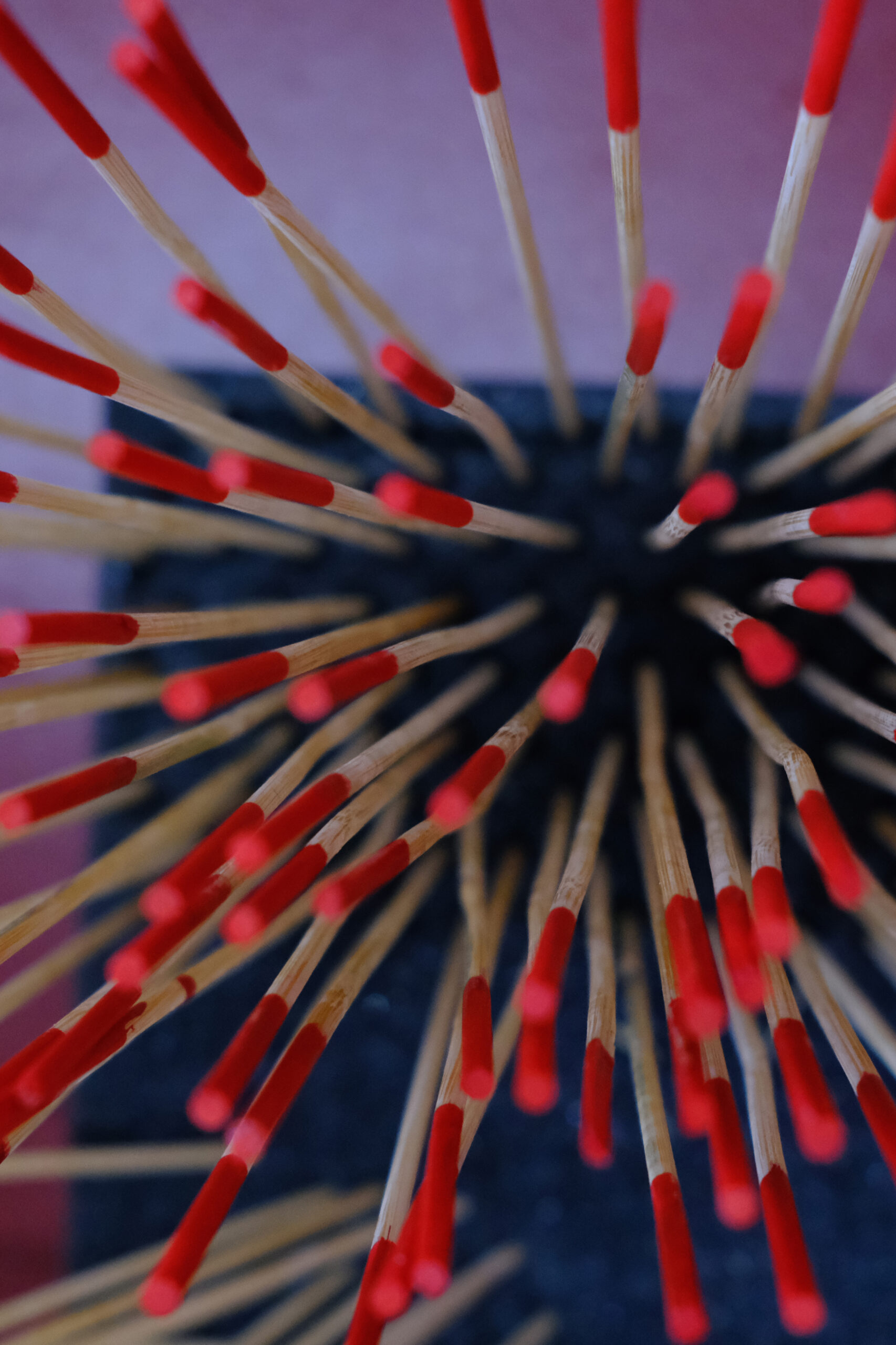
FF How does your creative process work? Do you work together or individually?
WMC We try to do everything in the creative process together. There is never three ideas competing to be chosen. Instead we try to let ourselves think of one idea that is collective and could never have been conceived by one of us individually. This is equally true for the concept of a new work as it is for the pattern. Before we actually start making a new work on location we never know what the pattern will be. We know the material we work with, the space the work will be in and the approximate size and then we just start in the middle. By improvising and continuously discussing what we do we let our collective actions decide what kind of pattern we create. By this we manage to surprise ourselves every time. Even still after 15 years.
FF What inspired you the most at the beginning of your work?
WMC We just wanted to make things. And I guess we still do. All three of us have a huge interest in the world around us. We’re inspired as much by everyday life as we are by art, or architecture, or nature. But in the end it is the act of making that defines it all.
FF Your first project was Forest Carpet, a carpet made of pinecones, acorns, moss, and dried leaves. How did you come up with this concept? And how long did it take to complete it?
WMC As said, this work was part of a bigger exhibition. This exhibition was about if nature in itself could be viewed as design. We used a tree trunk as a chair for example. But we also gathered materials from the forest floor. This ended up being Forest Carpet. We really liked the fact that we could give a renewed attention to the materials just by organising them in a recognisable pattern. It took only a few days to complete. Which looking back is nothing compared to later works. The work we are making now for Issey Miyake for example took three weeks to complete.
FF For this edition of the Salone del Mobile, you will collaborate with Issey Miyake to present Fold and Crease, an installation composed of a series of non-stitched carpets. What you have in common with the brand is a special attention to research and the use of materials: in the 1980s, Issey Miyake pioneered the use of plastic molding, metal wire, and paper in sculptural garments. Which materials have you used on this occasion and why?
WMC For this occasion we are using two materials. A big work will be on show downstairs made out of 60.000 coloured bamboo skewers. They will be put in a foam layer and draped over a custom made carrier. We came up with this idea because we were inspired by the great amount of detail in the Issey Miyake textiles and the amazing ways the textiles behaved when folded, creased, molded, shrunk and what else they do with it. Especially the results of the A-POC ABLE ISSEY MIYAKE brand were a big inspiration. So we looked for a material with which we could reflect on these two core qualities: big detail and behaviour of material when folded or creased. After Issey Miyake Studio send us boxes of materials they use in their workshops and factories we found these qualities in pins and needles when pricked into a soft surfaces like thick textile or foam. We then enlarged this by using skewers. However upstairs there will be three works show made out of needles. The materials we work with are always everyday materials. We use these materials as a painter uses paint. In the end we don’t see the original functions of the material any more. We see texture, color and pattern. We look for the aesthetic qualities within materials that you might not expect.
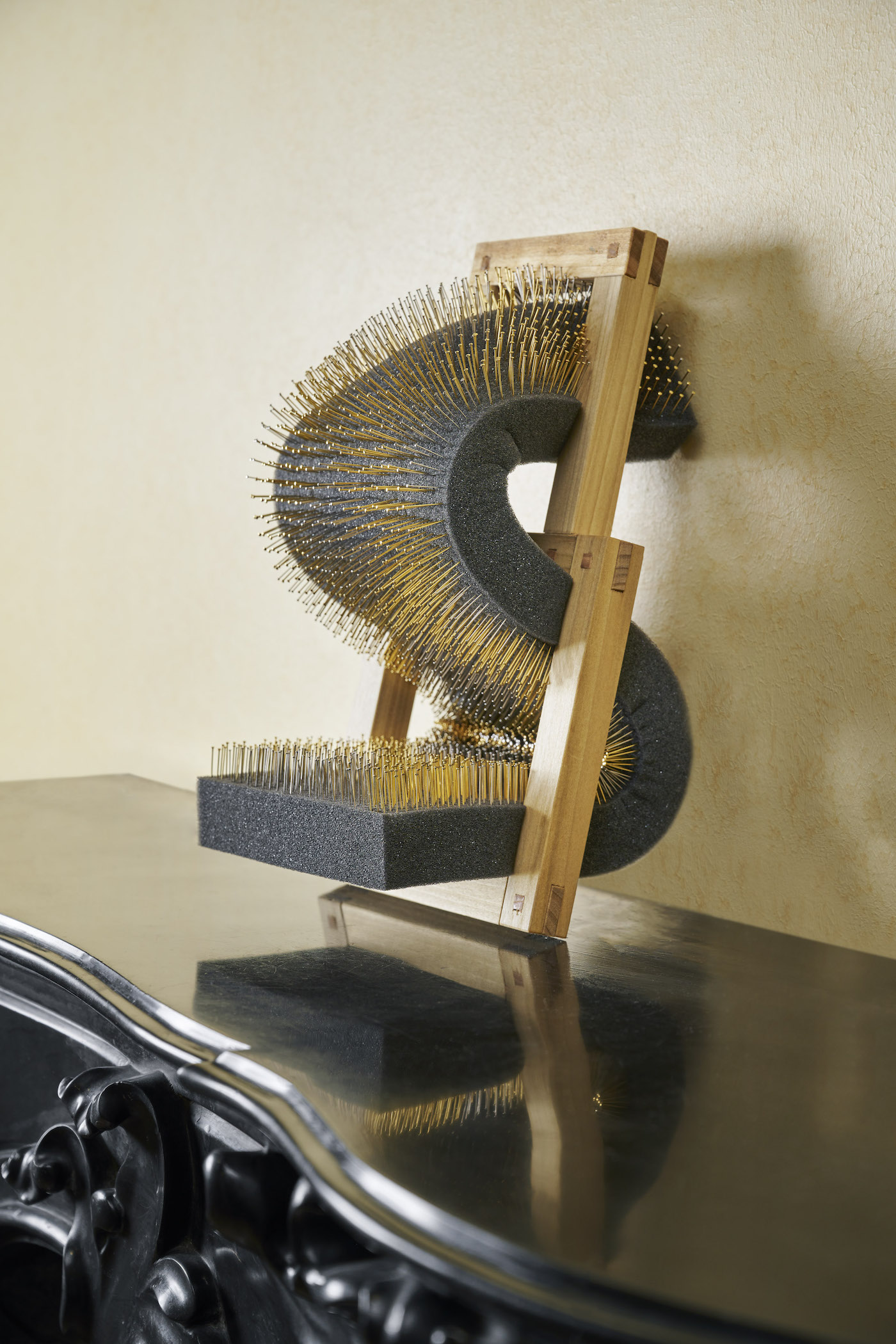
FF Touchability and Wantability are the main terms of this project. What do these two words mean to you and how did you concretise them in Fold and Crease?
WMC We like the idea of re-evaluating the products we use. And we like to play with the duality that lies within doing this. Our works are sometimes destroyed when touched, yet they are made out of products that are made to be touched. Our works are mostly made out of products you rarely really want (when did you really longed for a wooden skewer?) but yet after we worked with them they are part of an artwork that you might want. I think for this particular work we also play with the fact that it is exhibited in a shop that sells clothes. Our work might look like a textile, but is it? It might look like it is hanged there for sale, but is it? What exactly is it we made? We like to move on the lines that separate art, design and in this case fashion. I think this is another thing we have in common with Issey Miyake.
FF What is the lifecycle of your products?
WMC It really depends, some of our installations are made only for one exhibition. Others are made in public space to last for eternity. In this case we don’t know yet. After Milan it will travel back to the Netherlands and we’ll see what happens.
FF Re-appreciation is the keyword of your work. Has there been a trend towards the re-appreciation of things, clothes, and design objects by people today?
WMC This is a difficult question, I don’t have the feeling there really is. But then again, maybe I am not really up to date about the trends!
FF How can we apply this principle in our everyday lives while still nurturing a creative impulse?
WMC Creativity is not about what you have or what is or what has been. Creativity is about making new things with whatever material available. We want to be clear on one thing. The act of making for us is not about thinking of some clever idea. It is about working with hands. Not thinking of what the end result will be but just start and see what happens. As for applying this to our everyday lives. Just walk out the door without your phone and wallet and see what happens!

For further information isseymiyake.com.
